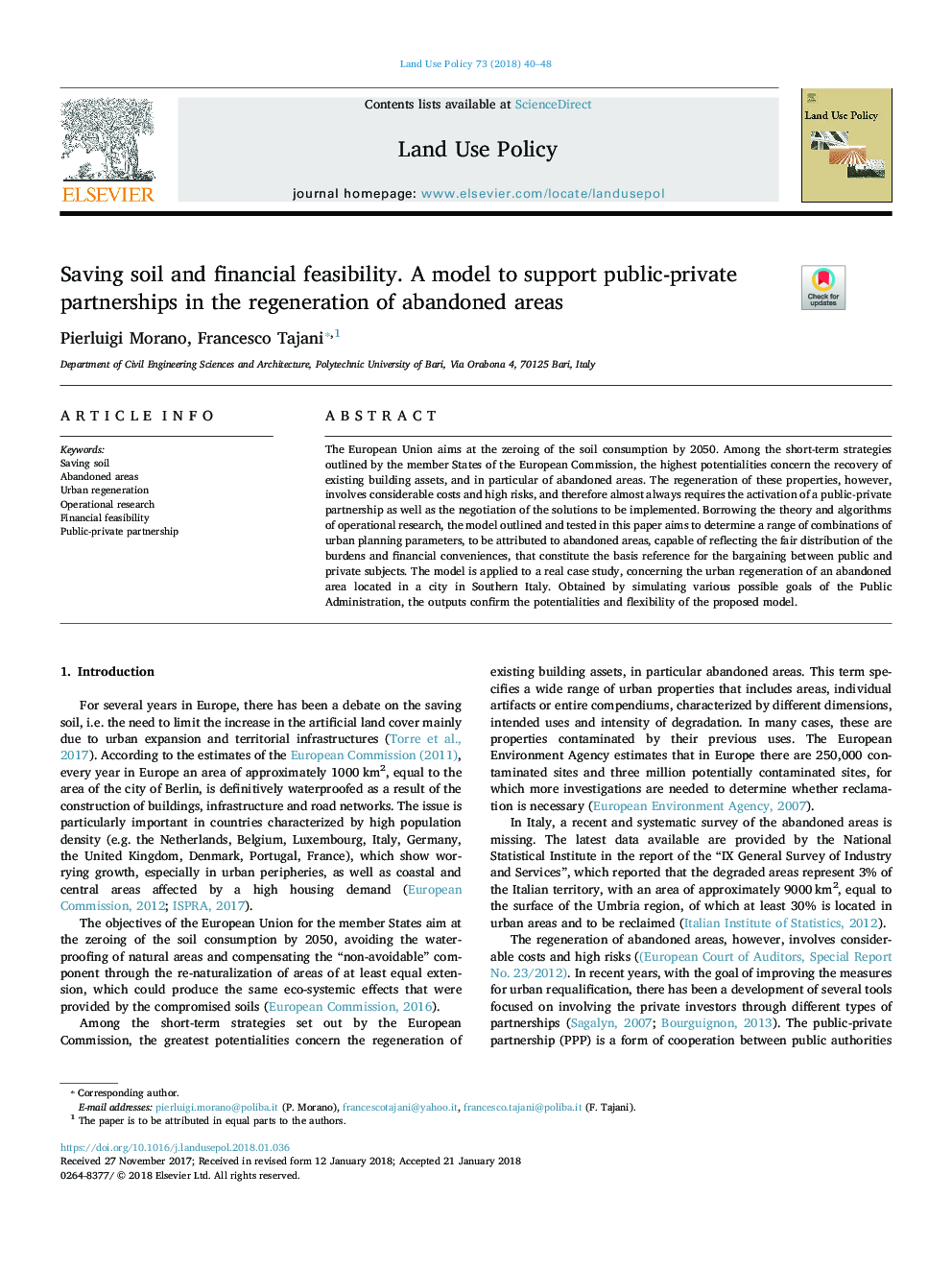| Article ID | Journal | Published Year | Pages | File Type |
|---|---|---|---|---|
| 6546457 | Land Use Policy | 2018 | 9 Pages |
Abstract
The European Union aims at the zeroing of the soil consumption by 2050. Among the short-term strategies outlined by the member States of the European Commission, the highest potentialities concern the recovery of existing building assets, and in particular of abandoned areas. The regeneration of these properties, however, involves considerable costs and high risks, and therefore almost always requires the activation of a public-private partnership as well as the negotiation of the solutions to be implemented. Borrowing the theory and algorithms of operational research, the model outlined and tested in this paper aims to determine a range of combinations of urban planning parameters, to be attributed to abandoned areas, capable of reflecting the fair distribution of the burdens and financial conveniences, that constitute the basis reference for the bargaining between public and private subjects. The model is applied to a real case study, concerning the urban regeneration of an abandoned area located in a city in Southern Italy. Obtained by simulating various possible goals of the Public Administration, the outputs confirm the potentialities and flexibility of the proposed model.
Related Topics
Life Sciences
Agricultural and Biological Sciences
Forestry
Authors
Pierluigi Morano, Francesco Tajani,
